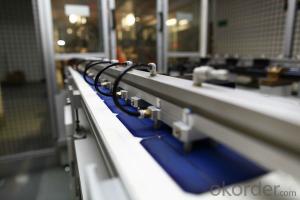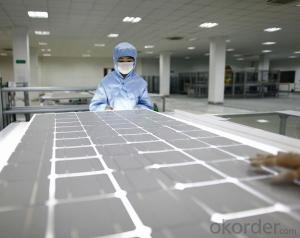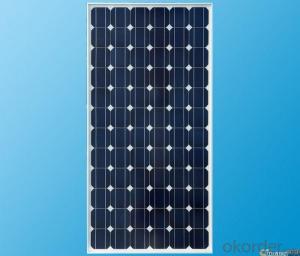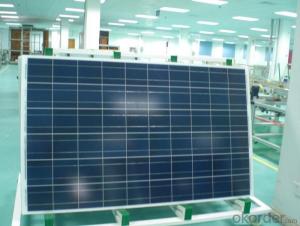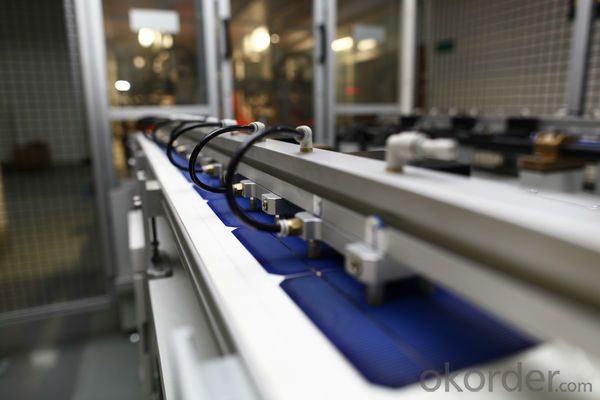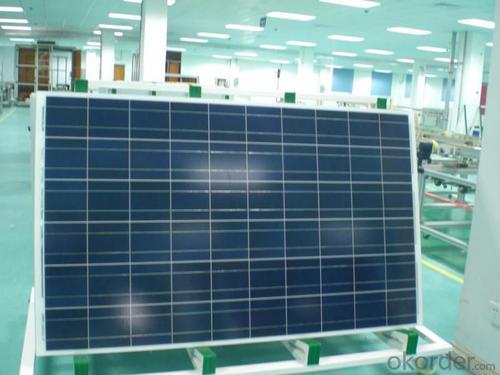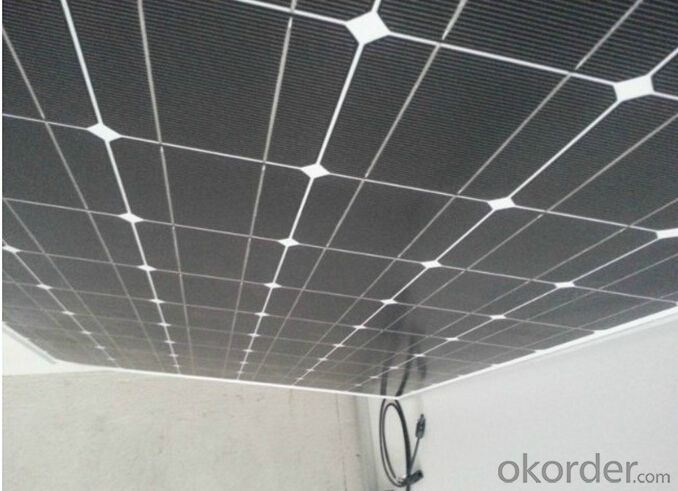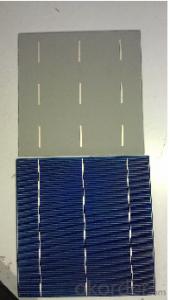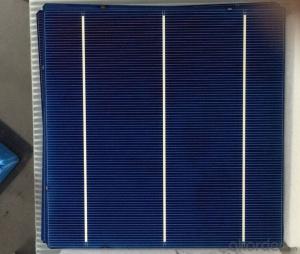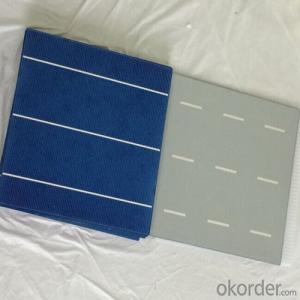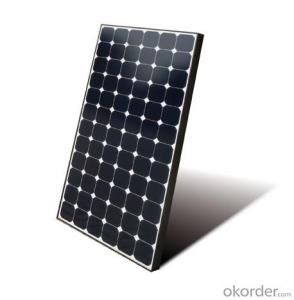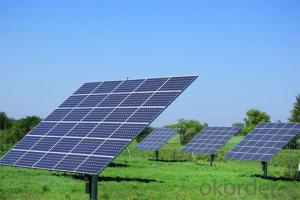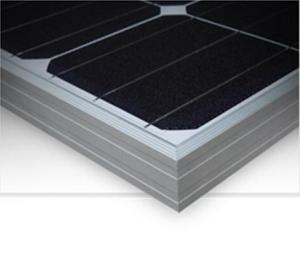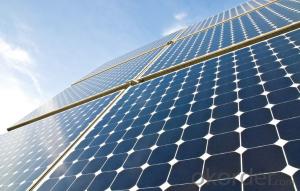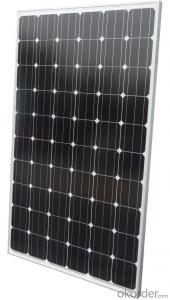Making Solar Cells:Powerful 230W 48V Monocrystalline Solar Module
- Loading Port:
- Shanghai
- Payment Terms:
- TT OR LC
- Min Order Qty:
- 11 watt
- Supply Capability:
- 1111111 watt/month
OKorder Service Pledge
OKorder Financial Service
You Might Also Like
1.Structure of Solar Module Description
The solar module is an off-gird solar power generator, designed to provide stable and reliable electricity to homes and communities without access to grid electricity or to those regions where are short of power or even without power. The solar module is convenient to move, easy to set-up with reliable performance, making it ideal for situations where emergency power is required. It is an ideal & reliable energy source for a wide variety of applications, ranging from lighting , radios, fans ,televisions ,computers ,refrigerator. The USB port is compatible with all 5V-USB charged devices. It can also act as a back-up power source during emergency situations.
2.Main Features of the Solar Module
1).High conversion efficiencies resulting in superior power output performance.
2).Outstanding power output even in low light or high temperature conditions
3).Optimized design for ease of soldering and lamination
4).Long-term stability,reliability and performance
3.Solar Module Images
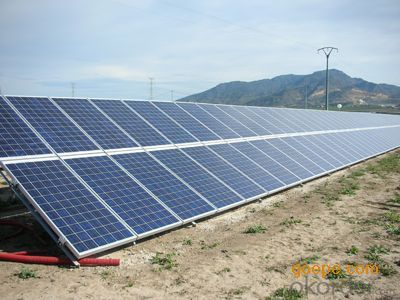
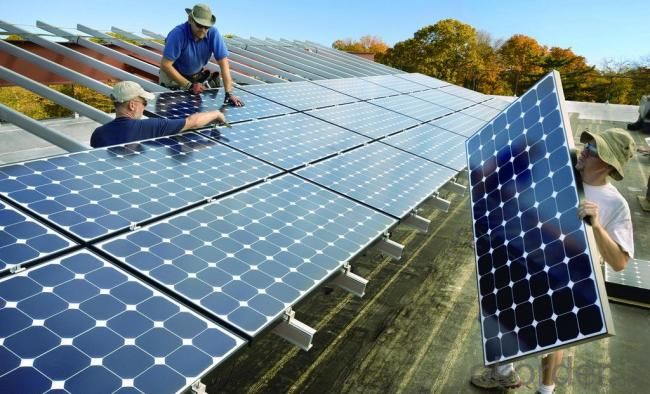
4.Solar Module Specification
1)High module conversion efficiency up to15.3% 2)25-year limited warranty on power output 3)TUV,UL,IEC61215,IEC61730,ISO,MCS,CEC
2) We offer you strongly competitive prices !
3) We offer the fastest shipping !
4) we can accept small order!
5) we design various of watt according to customer!
6) We have the best customer service team!
7) We have excellent manufacturer solar panel warranty policy !
Thanks for attention and hope to hear from you soon!
| Model Type | GY230M-60 | |||||
| Model power(Pmax) | 230WP | |||||
| Model power Voltage(Vmp) | 29.6v | |||||
| Model power Current(Imp) | 7.82A | |||||
| Open circuit voltage(Voc) | 36.9V | |||||
| Short circuit current(Isc) | 8.26A | |||||
| NO.of Diode | 6 | |||||
| Maximum System Voltage | 1000V(TUV)DC | |||||
| Maximum Series Fuse Rating | 10A | |||||
| Power Tolerance | ±3% | |||||
| Temperature Coefficients of Pmax | -0.44%/°C | |||||
| Temperature Coefficients of Voc | -0.33%/°C | |||||
| Temperature Coefficients of Isc | -0.04%/°C | |||||
| Nominal Operating Cell Temperature(NOCT) | 47±2°C | |||||
| STC:Irradiance 1000W/m2 Module Temperature 25°C AM=1.5 | ||||||
CELL TYPE | 156*156mm MONO SOLAR CELL |
No.of Cells | 60 |
Dimensions | 1640*992*40/45mm |
Weight | 20.5KG |
Front Glass | 3.2mm High transmission,lowlron,tempered Glass |
Frame | Anodized Aluminium Alloy |
Junction Box | IP65 Rated |
Output Cabies | TUV |1*4.0mm2| Length 900mm |
5.FAQ of Solar Module
1). Q: Are you a factory or trading company?
A: We are a factory.
2). Q: Where is your factory located? How can I visit there?
A: Our factory is located in Jiangyin, Jiangsu, China, near Shanghai. You are warmly welcomed to visit us!
3). Q: How can I get some samples?
A: Please connect me for samples
4). Q: Can the price be cheaper?
A: Of course, you will be offered a good discount for big amount.
- Q: Can solar cells be used in remote or inaccessible locations?
- Yes, solar cells can be used in remote or inaccessible locations as they do not require a constant power supply or connection to the grid. They can provide a reliable and sustainable source of electricity in areas where traditional power sources are unavailable or difficult to access.
- Q: Can solar cells be used for powering electric water heaters?
- Yes, solar cells can be used for powering electric water heaters. Solar panels generate electricity from sunlight, which can then be used to power electric water heaters. This is an eco-friendly and cost-effective way to heat water using renewable energy sources.
- Q: Can solar cells be used in space heating systems?
- Yes, solar cells can be used in space heating systems. Solar panels, which consist of solar cells, can convert sunlight into electricity. This electricity can then be used to power space heating systems, either directly or through storage in batteries. Additionally, solar thermal systems can use solar energy to heat water or air, which can then be used for space heating purposes.
- Q: Can solar cells be used in art installations?
- Yes, solar cells can definitely be used in art installations. They can be incorporated into various forms of artistic expression, such as sculptures, installations, and even interactive pieces. Solar cells not only provide a sustainable source of energy but also add an element of innovation and environmental consciousness to art. Their ability to generate electricity from sunlight opens up endless possibilities for creativity and the integration of technology in artistic displays.
- Q: How much does a solar cell weigh?
- The weight of a solar cell typically varies depending on its size and type, but on average, a standard solar cell weighs around 3 to 4 pounds (1.4 to 1.8 kilograms).
- Q: What is the role of solar cells in powering outdoor lighting?
- The role of solar cells in powering outdoor lighting is to convert sunlight into electricity. Solar cells, also known as photovoltaic cells, capture the sun's energy and convert it into usable electrical power. This power is then stored in batteries, which can be used to illuminate outdoor lights during the night. Solar cells eliminate the need for traditional electrical power sources, making outdoor lighting more environmentally friendly and cost-effective.
- Q: Can solar cells be used in air conditioning systems?
- Yes, solar cells can be used in air conditioning systems. Solar energy can be harnessed to power air conditioning units, either by directly using the electricity generated by solar panels or by converting solar energy into thermal energy for cooling purposes. This approach helps to reduce dependence on fossil fuels and contributes to a more sustainable and environmentally friendly way of cooling buildings.
- Q: What are the safety considerations for installing solar cells?
- Some safety considerations for installing solar cells include ensuring proper grounding and bonding to prevent electrical shock hazards, following manufacturer's guidelines for installation to prevent fire hazards, and using personal protective equipment when working at heights or handling equipment to prevent falls or injuries. Additionally, it is important to be aware of potential electrical and fire hazards during installation and maintenance, and to have a plan in place for emergency response.
- Q: What are the main components of a solar cell?
- The main components of a solar cell are the semiconductor material, typically made of silicon, which absorbs sunlight and converts it into electricity, and the metal contacts on the top and bottom layers of the cell, which allow the generated electricity to be collected and transferred to an external circuit.
- Q: Can solar cells be used underwater?
- No, solar cells cannot be used underwater as they rely on sunlight to generate electricity.
Send your message to us
Making Solar Cells:Powerful 230W 48V Monocrystalline Solar Module
- Loading Port:
- Shanghai
- Payment Terms:
- TT OR LC
- Min Order Qty:
- 11 watt
- Supply Capability:
- 1111111 watt/month
OKorder Service Pledge
OKorder Financial Service
Similar products
Hot products
Hot Searches
Related keywords
